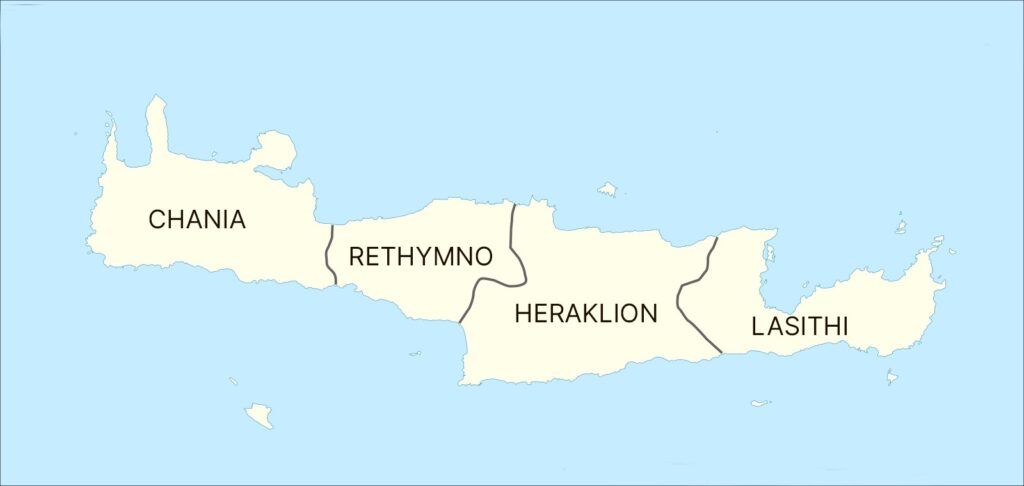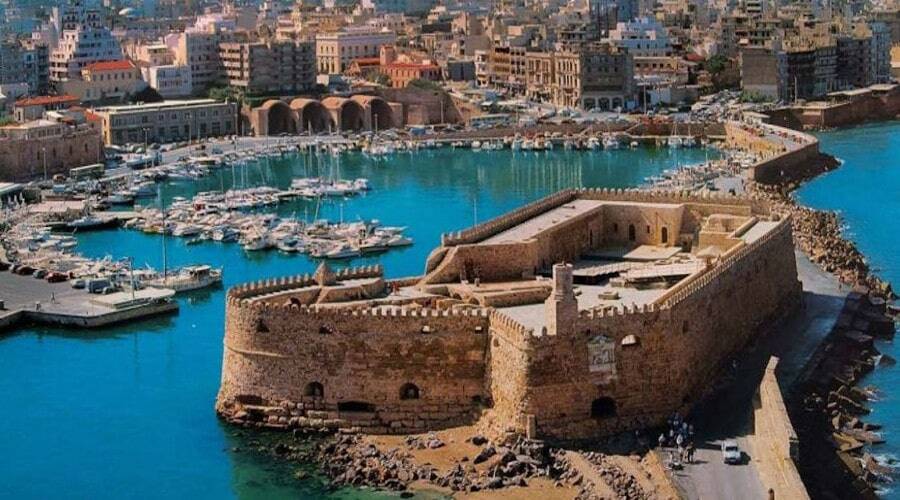The Heraklion region in Crete boasts a rich cultural heritage that spans from antiquity and the Byzantine era to modern history, featuring numerous monuments and traditions. As a cultural crossroads, it is home to significant archaeological and historical sites, including the Minoan palaces of Knossos, Phaistos, and Malia, along with Heraklion’s Koules Castle and Venetian walls.
This region is a premier cultural destination, with museums showcasing its history and art. Additionally, Heraklion offers breathtaking natural landscapes, including gorges, beaches, and traditional villages that preserve local customs and culinary traditions.
Heraklion city was known during the Byzantine period as Castro. It was a small, walled town. Arab Saracens occupied Crete in 823 AD and chose Heraklion as their capital. The city attained great prosperity; however, the port became a warehouse for pirate booty and a centre for hostage trading. The Byzantines retook Crete in 961 AD. In the 13th century, Heraklion came under Venetian rule. Maintaining it as the island’s capital, they surrounded it with a large wall, making it the strongest fortress in the Eastern Mediterranean. The largest portion of the walls still stands today.
The great painter El Greco was born there in 1541.
The Ottoman Turks began sieging the city in 1647, which lasted 22 years. The city was destroyed following its fall, but the Ottomans chose it as their new capital. Heraklion was liberated in 1913 and incorporated into modern Greece and the rest of Crete.
The four Regions of Crete

Gastronomy – Local products
Heraklion, Crete, offers a rich and varied gastronomic experience deeply rooted in Greek and Cretan traditions. Here are some of the culinary highlights:
1. Cretan Meze (Small Plates)
- Dakos: A traditional Cretan dish made with barley rusk, topped with grated tomato, local mizithra cheese, olive oil, and oregano.
- Dolmades: Vine leaves stuffed with rice, herbs, and sometimes minced meat.
- Sfakianopita: A thin Cretan pie filled with soft cheese, typically drizzled with honey.
2. Cheeses
- Mizithra: A soft, creamy cheese made from sheep or goat milk, slightly tangy and often used as a topping for salads and dishes.
- Graviera: A hard, nutty-flavoured cheese, often enjoyed on its own or grated over food.
- Anthotiro: A fresh, crumbly cheese similar to ricotta, with a mild flavour and creamy texture.
3. Seafood Dishes
- Being a port city, Heraklion offers an abundance of fresh seafood dishes, such as:
- Kalamarakia: Fried or grilled calamari seasoned with lemon and olive oil.
- Grilled Octopus: Tender octopus often marinated in olive oil and herbs.
- Htapodi Krasato: Octopus stewed in wine, a flavorful and traditional Cretan way to prepare this seafood.
4. Traditional Cretan Meat Dishes
- Lamb with stamnagathi: A dish made with tender lamb and stamnagathi (wild greens), showcasing the flavours of local herbs and meats.
- Gamopilafo: A rice dish traditionally served at weddings, cooked in meat broth with lemon and served with lamb or goat.
- Apaki: Smoked pork marinated with vinegar and herbs, a beloved Cretan delicacy.
5. Vegetable Dishes and Salads
- Horta: Wild greens boiled and served with olive oil and lemon, showcasing the earthy flavours of Crete’s foraged produce.
- Briam: A medley of baked vegetables, including potatoes, zucchini, tomatoes, and bell peppers, flavoured with local herbs and olive oil.
6. Desserts
- Kalitsounia: Small pastries with sweetened mizithra cheese, honey, or cinnamon.
- Xerotigana: Crispy, spiral-shaped pastries drizzled with honey and sprinkled with sesame seeds.
- Rakomelo: A warm drink made of raki (Cretan distilled spirit) mixed with honey, often enjoyed as a digestif.
7. Wine and Raki
Raki (or Tsikoudia): A potent spirit distilled from grape remnants, commonly served as a welcome drink or after meals.
Crete has a long winemaking tradition, producing varieties such as Vidiano, Vilana, and Kotsifali. Heraklion also has several wineries and vineyards that offer tours and tastings.




